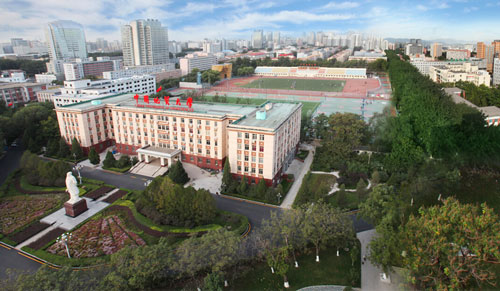China University of Geosciences: CUG Progresses in Global Intermediate-depth Seismicity
“Metamorphism-facilitated faulting in deforming orthopyroxene: Implications for global intermediate-depth seismicity”, of which the first author is associate professor SHI Feng from the State Key Laboratory of Geological Processes and Mineral Resources was published online in Proceedings of the National Academy of Scienceson March 7. The co-authors are Prof. WANG Yanbin from the University of Chicago, Prof. ZHU Lupei from Saint Louis University, research fellow WANG Kelin from Geological Survey of Canada. The abstract of the paper is as follows.
Intermediate-depth earthquakes that occur between∼60- and 300-km depths in subducted oceanic slabs often form a double band of seismicity. The upper band of seismicity is predominantly within the basaltic crust and is thought to be facilitated by processes related to dehydration reactions. More controversial is the faulting mechanism of the lower band of seismicity (LBS), located within the subducted mantle lithosphere, which consists primarily of olivine and orthopyroxene (Opx). High-pressure petrological studies have shown that as the oceanic lithosphere subducts to below 60 to 70 km in depth, the Opx component undergoes an exothermic metamorphic reaction characterized by continuous garnet exsolution to depths of∼250 km. Here, we simulate the mechanical behavior of syn-deformational metamorphosing Opx in oceanic lithosphere using controlled deformation experiments combined with acoustic emission detection. We show that deforming Opx under the pressure and temperature conditions corresponding to those of LBS fail consistently by macroscopic faulting, accompanied by numerous acoustic emission events, which are laboratory analogs of earthquakes. Microstructural analysis shows that syn-deformational metamorphism proceeds by garnet exsolution both within Opx grains and along grain boundaries. Ultrafine-grained reaction product (grain size as small as 50 nm) facilitates strain localization and weakening, promoting slip instability. An examination of thermal structures in nine subduction zones shows that temperature conditions in these LBSs are consistent with the kinetic onset of brittle behavior observed in the laboratory, considering the tradeoff between onset temperature and strain rate. These results suggest that metamorphosing Opx likely plays an important role in intraslab earthquake processes.

